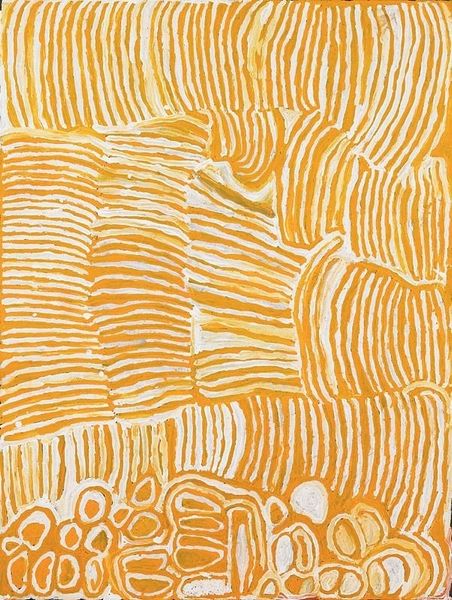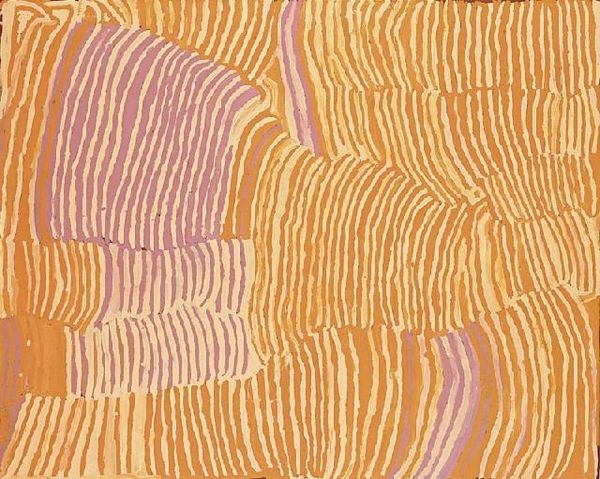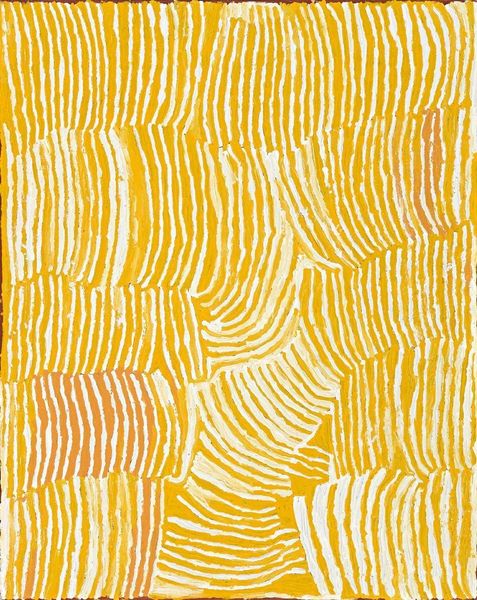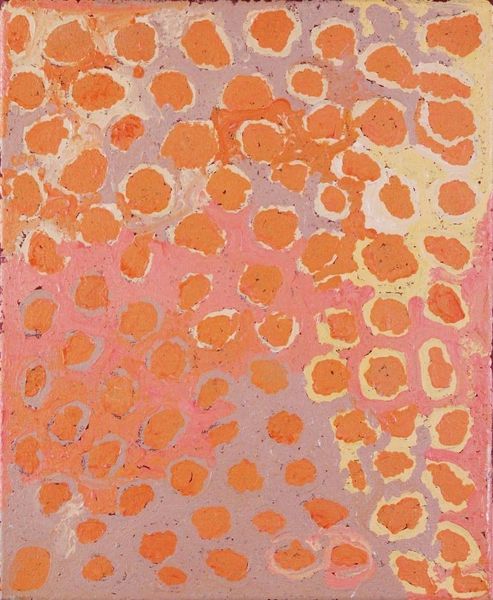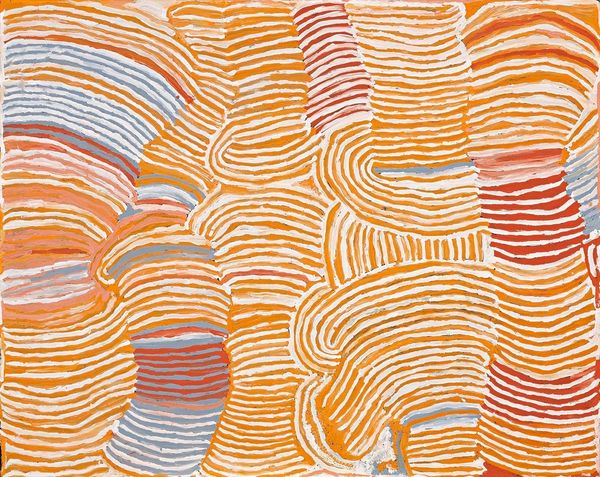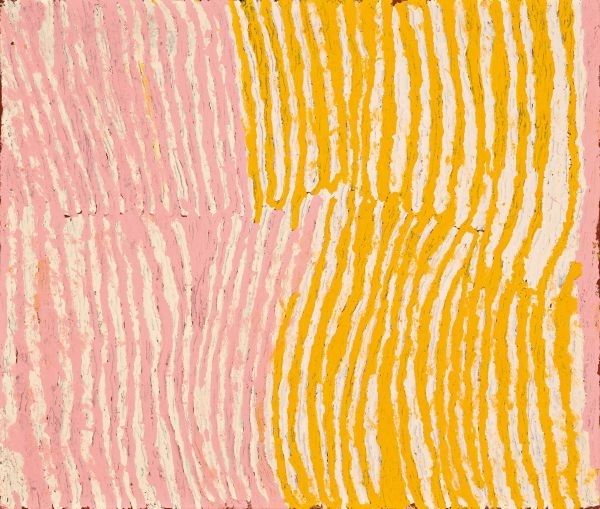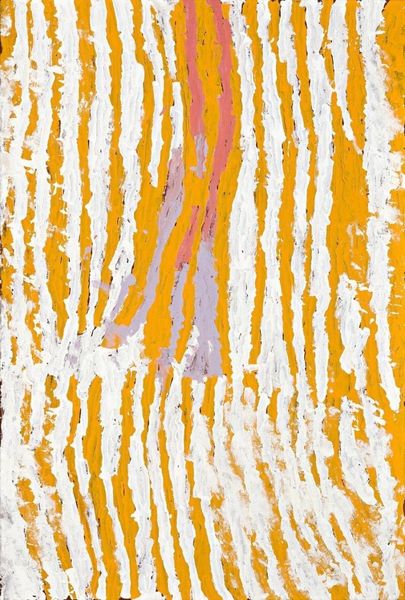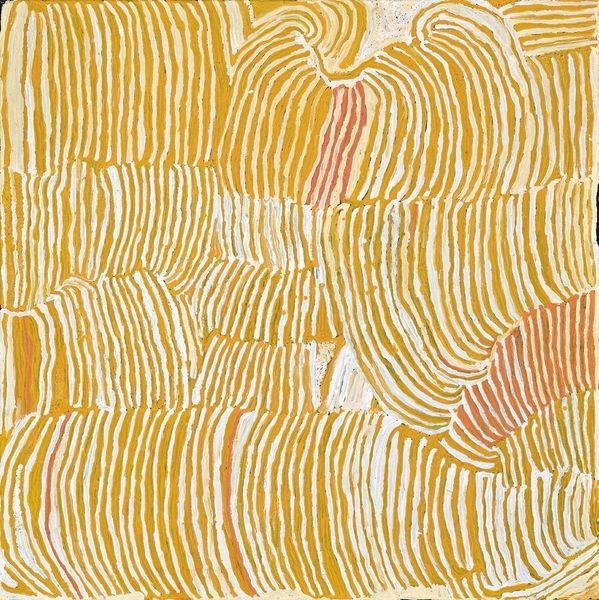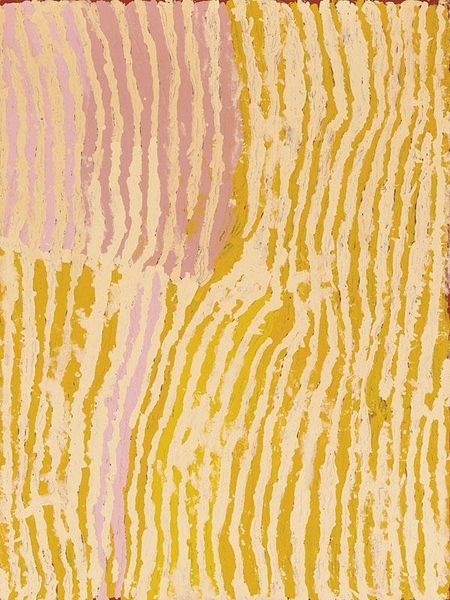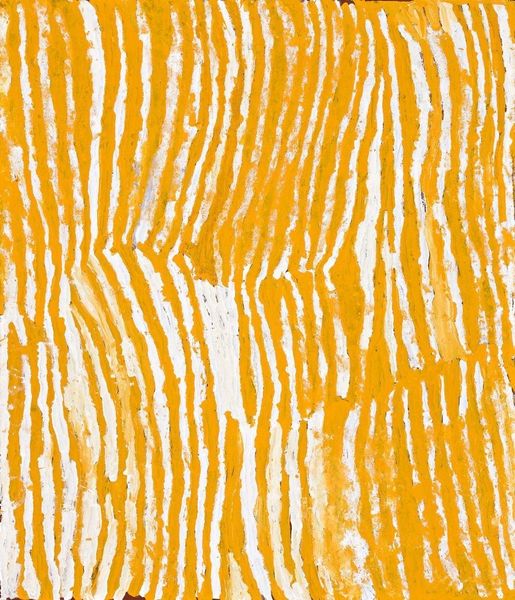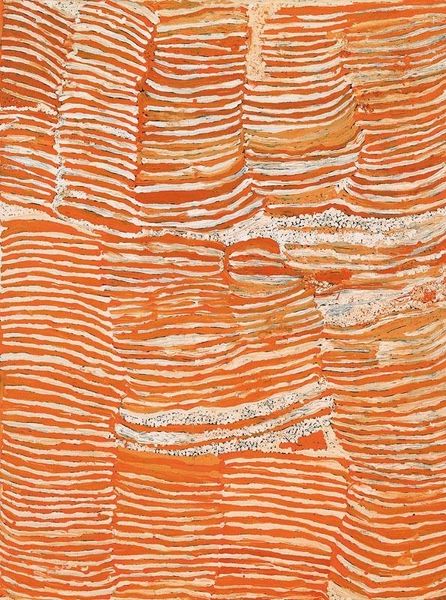
painting, acrylic-paint
#
naturalistic pattern
#
random pattern
#
painting
#
acrylic-paint
#
abstract pattern
#
organic pattern
#
flower pattern
#
abstraction
#
intricate pattern
#
pattern repetition
#
layered pattern
#
funky pattern
#
pattern in nature
Copyright: Makinti Napanangka,Fair Use
Curator: So, standing here, we're face to face with "Kungka Kutjarra (Two Women)", a painting created by Makinti Napanangka in 2000 using acrylic. It immediately brings Pattern and Decoration movement to my mind, specifically due to its organic, repetitive form and the indigenous connections and connotations it represents. Editor: Wow, that’s a mouthful! My first impression? This artwork buzzes! Like a field shimmering under the scorching sun or the skin of citrus fruit ready to be peeled. The circular forms, it's almost cellular, wouldn’t you agree? Curator: Indeed! These circles—often interpreted as seeds or fruits—are vital to understanding the painting. Napanangka belonged to the Pintupi language group, where land and kinship structures intersect intricately. So, seeing women depicted with seeds points to profound issues of place, identity, and connection to ancestral land rights. Editor: Ancestral land rights expressed through what looks like simple organic blobs? Now that's clever. It makes you wonder about the unseen stories simmering just beneath the surface of something we might superficially write off as just “pattern.” It’s deceivingly simple, really! Curator: Exactly. Napanangka's work often portrays the landscape as not only a geographical entity, but also as a repository of knowledge, stories, and ancestral presence. Considering colonial disruption and dispossession, indigenous painting is not simply art—it's about reaffirming cultural continuance. Editor: Continuance – I like that! Makes you rethink the nature of 'abstraction,' too. Instead of running *away* from representation, maybe she's abstracting to preserve or obscure or even translate. This constant orange glow feels purposeful; not quite oppressive but persistent. Curator: It’s quite compelling to analyze in this framework. Considering its production at the start of the 21st century, after decades of postcolonial resistance, we see Napanangka contributing to the critical dialogue around indigenous representation and self-determination. Her act of painting becomes an act of resistance. Editor: Resistance. That's it! Not a yell, but a whisper that vibrates in your bones. Standing here, after this chat, this is not mere décor or a random collection of dots. Thank you – I was totally missing the powerful historical significance. Curator: And thank you; your reading helped reveal to me how abstraction could actually be a conscious and effective indigenous strategy for challenging colonial perceptions of indigenous knowledge systems.
Comments
No comments
Be the first to comment and join the conversation on the ultimate creative platform.
